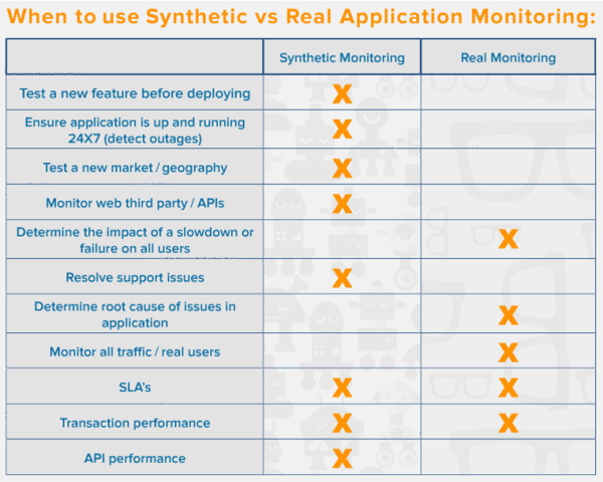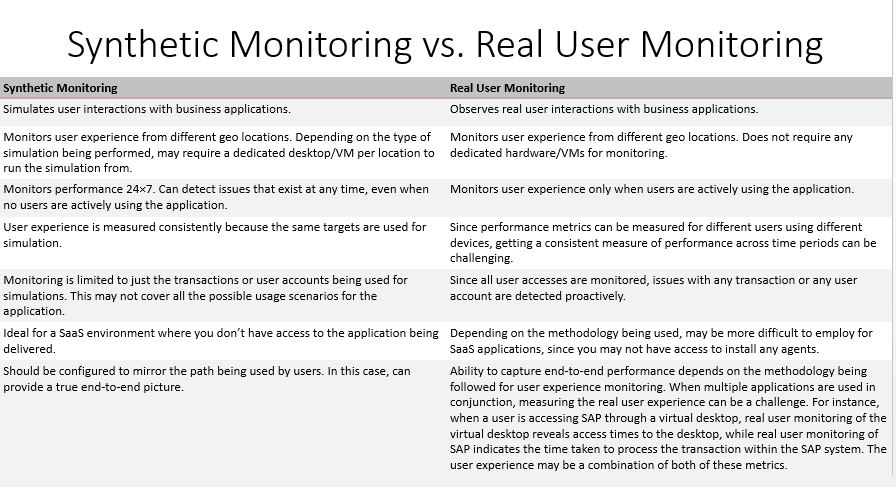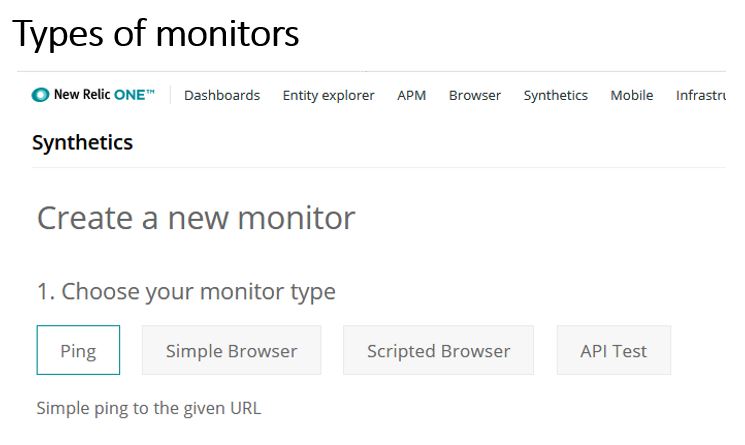Synthetic monitoring
Synthetic monitoring is a monitoring technique that is done by using an emulation or scripted recordings of transactions. Behavioral scripts are created to simulate an action or path that a customer or end-user would take on a site, application or other software.
Real User Monitoring
Real user monitoring (RUM) is a passive monitoring technology that analyzes all user interaction with a website or client interacting with a server or cloud-based application. Monitoring actual user interaction with a website or an application is important to operators to determine if users are being served quickly and without errors and, if not, which part of a business process is failing.
Real user monitoring (RUM) is a passive monitoring technology that analyzes all user interaction with a website or client interacting with a server or cloud-based application. Monitoring actual user interaction with a website or an application is important to operators to determine if users are being served quickly and without errors and, if not, which part of a business process is failing.
NewRelic Synthetic Use Scenario
With synthetic monitoring, you can:
- Get the context of failures by connecting the availability and performance of endpoints to the underlying applications and infrastructure.
Easily diagnose if an issue stems from the network or AWS location, a slow third party resource, or the health of backend services or infrastructure. - Add synthetic monitoring into build automation and CI/CD pipelines to automatically track performance and check functionality for each deployment.
- Expand your monitoring further with real, Selenium-powered scripted browsers, which test login procedures, searches, and other critical business transactions.
- Monitor your API endpoints with API tests.
Synthetic Monitoring vs. Real User Monitoring


Types of monitors

- Apache Lucene Query Example - April 8, 2024
- Google Cloud: Step by Step Tutorials for setting up Multi-cluster Ingress (MCI) - April 7, 2024
- What is Multi-cluster Ingress (MCI) - April 7, 2024

